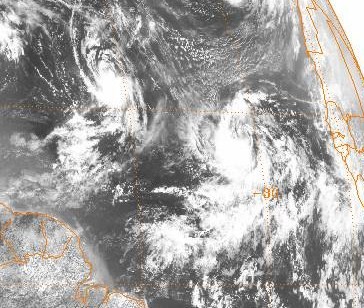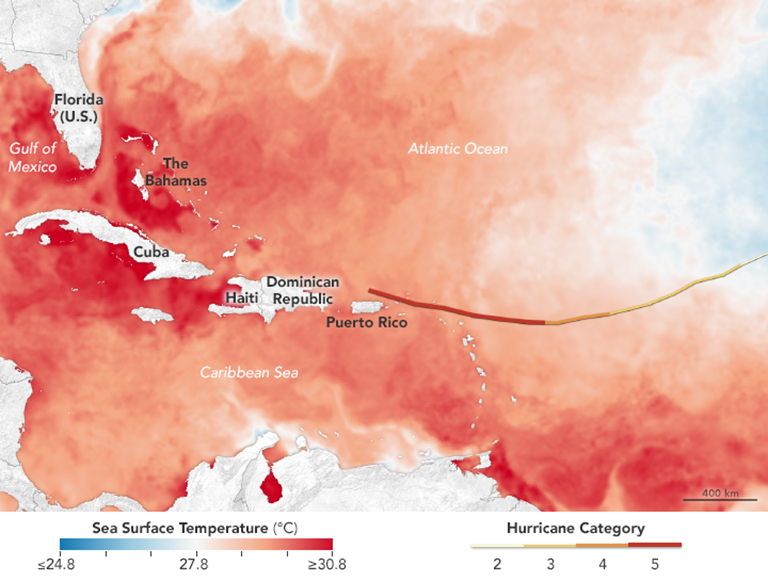|
Sandy Island, Anguilla
Sandy Island is an island in Anguilla, a British Overseas Territory, and is part of the Lesser Antilles in the Caribbean Sea. Sandy Island is a small island on which a local restaurant is located. From Sandy Ground, it can be reached in 15 minutes, and the owner of the restaurant provides free boat crossing. The island is small (ca. 250x75 meters), consisting of round white sands with a little vegetation in the middle, including shrubs and palm trees. The island is popular with tourists for the richness of its seabed and its beach of fine sand and coral, as well as for the presence of a well known bar/restaurant in the area. In 1995, the island was submerged by Hurricane Luis for some days, while the facilities were severely damaged by the passage of the next several tropical cyclones and, during one of these storms, vessel went aground on the island. The buildings were rebuilt later. Even the flora was damaged by tropical storms, the palm trees and shrubs were uprooted by str ... [...More Info...] [...Related Items...] OR: [Wikipedia] [Google] [Baidu] |
Atlantic Ocean
The Atlantic Ocean is the second largest of the world's five borders of the oceans, oceanic divisions, with an area of about . It covers approximately 17% of Earth#Surface, Earth's surface and about 24% of its water surface area. During the Age of Discovery, it was known for separating the New World of the Americas (North America and South America) from the Old World of Afro-Eurasia (Africa, Asia, and Europe). Through its separation of Afro-Eurasia from the Americas, the Atlantic Ocean has played a central role in the development of human society, globalization, and the histories of many nations. While the Norse colonization of North America, Norse were the first known humans to cross the Atlantic, it was the expedition of Christopher Columbus in 1492 that proved to be the most consequential. Columbus's expedition ushered in an Age of Discovery, age of exploration and colonization of the Americas by European powers, most notably Portuguese Empire, Portugal, Spanish Empire, Sp ... [...More Info...] [...Related Items...] OR: [Wikipedia] [Google] [Baidu] |
Antilles
The Antilles is an archipelago bordered by the Caribbean Sea to the south and west, the Gulf of Mexico to the northwest, and the Atlantic Ocean to the north and east. The Antillean islands are divided into two smaller groupings: the Greater Antilles and the Lesser Antilles. The Greater Antilles includes the Cayman Islands and larger islands of Cuba, Hispaniola (subdivided into the nations of the Dominican Republic and Haiti) and Navassa Island, Jamaica, and Puerto Rico. The Lesser Antilles contains the northerly Leeward Islands and the southeasterly Windward Islands as well as the Leeward Antilles just north of Venezuela. The Lucayan Archipelago (consisting of The Bahamas and the Turks and Caicos Islands), though a part of the West Indies, is generally not included among the Antillean islands. Geography, Geographically, the Antillean islands are generally considered a subregion of North America. Culturally speaking, Cuba, the Dominican Republic, and Puerto Rico – and sometime ... [...More Info...] [...Related Items...] OR: [Wikipedia] [Google] [Baidu] |
British Overseas Territory
The British Overseas Territories (BOTs) or alternatively referred to as the United Kingdom Overseas Territories (UKOTs) are the fourteen dependent territory, territories with a constitutional and historical link with the United Kingdom that, while not forming part of the United Kingdom itself, are part of its sovereign territory. The permanently inhabited territories are delegated varying degrees of internal self-governance, with the United Kingdom retaining responsibility for Military, defence, foreign relations, and internal security, and ultimate responsibility for governance. Three of the territories are chiefly or only inhabited by military or scientific personnel, the rest hosting significant civilian populations. All fourteen have the British monarch as head of state. These UK government responsibilities are assigned to various departments of the Foreign, Commonwealth and Development Office and are subject to change. Population Most of the territories retain permanent ... [...More Info...] [...Related Items...] OR: [Wikipedia] [Google] [Baidu] |
Anguilla
Anguilla is a British Overseas Territories, British Overseas Territory in the Caribbean. It is one of the most northerly of the Leeward Islands in the Lesser Antilles, lying east of Puerto Rico and the Virgin Islands and directly north of Saint Martin (island), Saint Martin. The territory consists of the main island of Anguilla, approximately long by wide at its widest point, together with a number of much smaller islands and cays with no permanent population. The territory's capital is The Valley, Anguilla, The Valley. The total land area of the territory is , with a population of approximately (). Etymology The native Arawak name for the island was ''Malliouhana''. In reference to the island's shape, the Italian ', meaning "eel" (in turn, from the Latin diminutive of ''anguis'', "snake") was used as its name. Anguillan tradition holds that Christopher Columbus named the island. History Anguilla was first settled by Indigenous Amerindian peoples who migrated from S ... [...More Info...] [...Related Items...] OR: [Wikipedia] [Google] [Baidu] |
Atlantic Time Zone
The Atlantic Time Zone is a geographical region that keeps standard time—called Atlantic Standard Time (AST)—by subtracting four hours from Coordinated Universal Time ( UTC), resulting in UTC−04:00. AST is observed in parts of North America including several Caribbean islands. During part of the year, some portions of the zone observe daylight saving time, referred to as Atlantic Daylight Time (ADT), by moving their clocks forward one hour to UTC−03:00. The clock time in this zone is based on the mean solar time of the 60th meridian west of the Greenwich Observatory. In Canada, the provinces of New Brunswick, Nova Scotia, and Prince Edward Island are in this zone, though legally they calculate time specifically as an offset of four hours from Greenwich Mean Time (GMT–4) rather than from UTC. Small portions of Quebec (eastern Côte-Nord and the Magdalen Islands) also observe Atlantic Time. Officially, the entirety of Newfoundland and Labrador observes Newfoundland St ... [...More Info...] [...Related Items...] OR: [Wikipedia] [Google] [Baidu] |
Anguilla Islands
Anguilla is a British Overseas Territory in the Caribbean. It is one of the most northerly of the Leeward Islands in the Lesser Antilles, lying east of Puerto Rico and the Virgin Islands and directly north of Saint Martin. The territory consists of the main island of Anguilla, approximately long by wide at its widest point, together with a number of much smaller islands and cays with no permanent population. The territory's capital is The Valley. The total land area of the territory is , with a population of approximately (). Etymology The native Arawak name for the island was ''Malliouhana''. In reference to the island's shape, the Italian ', meaning "eel" (in turn, from the Latin diminutive of ''anguis'', "snake") was used as its name. Anguillan tradition holds that Christopher Columbus named the island. History Anguilla was first settled by Indigenous Amerindian peoples who migrated from South America. The earliest Native American artefacts found on Anguilla ha ... [...More Info...] [...Related Items...] OR: [Wikipedia] [Google] [Baidu] |
Lesser Antilles
The Lesser Antilles is a group of islands in the Caribbean Sea, forming part of the West Indies in Caribbean, Caribbean region of the Americas. They are distinguished from the larger islands of the Greater Antilles to the west. They form an arc which begins east of Geography of Puerto Rico, Puerto Rico at the Virgin Islands, archipelago of the Virgin Islands, swings southeast through the Leeward Islands, Leeward and Windward Islands towards South America, and turns westward through the Leeward Antilles along the Geography of Venezuela, Venezuelan coast. Most of them are part of a long, partially volcanic arc, volcanic island arc between the Greater Antilles to the north-west and the continent of South America."West Indies." ''Merriam-Webster's Geographical Dictionary'', 3rd ed. 2001. () Springfield, MA: Merriam-Webster Inc., p. 1298. The islands of the Lesser Antilles form the eastern boundary of the Caribbean Sea where it meets the Atlantic Ocean. Together, the Lesser Antilles a ... [...More Info...] [...Related Items...] OR: [Wikipedia] [Google] [Baidu] |
Caribbean Sea
The Caribbean Sea is a sea of the Atlantic Ocean, North Atlantic Ocean in the tropics of the Western Hemisphere, located south of the Gulf of Mexico and southwest of the Sargasso Sea. It is bounded by the Greater Antilles to the north from Cuba to Puerto Rico, the Lesser Antilles to the east from the Virgin Islands to Trinidad and Tobago, South America to the south from the Venezuela, Venezuelan coastline to the Colombia, Colombian coastline, and Central America and the Yucatán Peninsula to the west from Panama to Mexico. The Geopolitics, geopolitical region around the Caribbean Sea, including the numerous islands of the West Indies and adjacent coastal areas in the mainland of the Americas, is known as the Caribbean. The Caribbean Sea is one of the largest seas on Earth and has an area of about . The sea's deepest point is the Cayman Trough, between the Cayman Islands and Jamaica, at below sea level. The Caribbean coastline has many gulfs and bays: the Gulf of Gonâve, the Gul ... [...More Info...] [...Related Items...] OR: [Wikipedia] [Google] [Baidu] |
Hurricane Luis
Hurricane Luis was a long lived and powerful tropical cyclone that was the strongest hurricane to make landfall and the third-most intense hurricane recorded during the 1995 Atlantic hurricane season. The storm, along with Humberto, Iris, and Karen, was one of four simultaneous tropical systems in the Atlantic basin. The system formed from a tropical wave, south of Cape Verde islands west of Africa, on August 28, and attained tropical storm status on August 29. The storm reached hurricane status on August 31 and later developed into a Category 4 hurricane. Luis affected the Leeward Islands at this strength from September 4 to September 6. By the time Luis made landfall on Newfoundland, it had weakened down to a Category 1 hurricane and then became extratropical on September 11. Luis caused extensive damage to Antigua, St. Barthelemy, the island of St. Martin and Anguilla as it affected Bermuda. The storm accounted for 19 confirmed deaths, left nearly 20,000 homeless (most ... [...More Info...] [...Related Items...] OR: [Wikipedia] [Google] [Baidu] |
Hurricane Irma
Hurricane Irma was an extremely powerful and devastating tropical cyclone that was the first Category 5 hurricane to strike the Leeward Islands on record, followed by Hurricane Maria, Maria two weeks later. At the time, it was considered the most powerful hurricane on record in the open Atlantic region, outside of the Caribbean Sea and Gulf of Mexico, until it was surpassed by Hurricane Dorian two years later. It was also the third-strongest Atlantic hurricane at landfall ever recorded, just behind the 1935 Labor Day hurricane, 1935 Labor Day Hurricane and Dorian. The ninth tropical cyclone naming, named storm, fourth hurricane, second Saffir–Simpson scale#Categories, major hurricane, and first List of Category 5 Atlantic hurricanes, Category 5 hurricane of the extremely active 2017 Atlantic hurricane season, Irma caused widespread and catastrophic damage throughout its long lifetime, particularly in the northeastern Caribbean and the Florida Keys. It was also the m ... [...More Info...] [...Related Items...] OR: [Wikipedia] [Google] [Baidu] |




